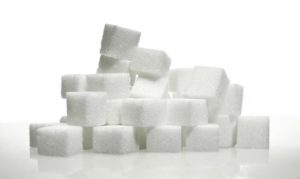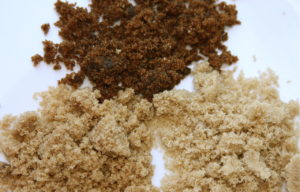Sugar is sweet and soluble carbohydrates, and there are various types of sugar derived from different sources. The most commonly used sugar is sucrose, a disaccharide of glucose and fructose. Sugars can be found in most plants in their tissues, and the ones in sugar canes and sugar beets are sufficiently concentrated for commercial extraction.
Uses
- In most parts of the world, sugar is an important part of the human diet, making food more palatable and providing food energy. After cereals and vegetable oils, sugar derived from sugarcane and beet provided more kilocalories per capita per day on average than other food groups.
- According to the FAO, an average of 24 kilograms (53 lb) of sugar, equivalent to over 260 food calories per day, was consumed annually per person of all ages in the world in 1999. Even with rising human populations, sugar consumption is expected to increase to 25.1 kilograms (55 lb) per person per year by 2015.
- Data collected in multiple U.S. surveys between 1999 and 2008 show that the intake of added sugars has declined by 24 percent with declines occurring in all age, ethnic and income groups.
Benefits
- Environment benefits – Sugar is created from natural resources without the use of pesticides and other harmful products, in a way what don pollutes environment. That is not the case with the production of the industrial artificial sweeteners.
- Minerals and nutrients – Sugars in their structure have ingredients that are passed to them from their natural sources, sugarcanes or beet. Elements such as phosphorus, calcium, iron, magnesium and potassium will not be greatly present in the industrially refined sugar.
- Skin health – Sugar’s glycolic acid can be very helpful in maintaining the health and look of your skin. Using it can help elimination blemishes and restoring the balance in the skin’s oils.
- Calorie content – Sugar has a high calorie content that will give your body energy that you lack. However, all that energy is short lived and it can only give your short bust of increased productivity. Because sugar contains four calories per gram, but it lacks nutritious value (no dietary fibers) and because of that sugar is only an added ingredient in many meals.
Cautions
- It overloads and damages your liver. The effects of too much sugar or fructose can be likened to the effects of alcohol. All the fructose you eat gets shuttled to the only organ that has the transporter for it: your liver. This severely taxes and overloads the organ, leading to potential liver damage.
- It tricks your body into gaining weight and affects your insulin and leptin signaling. Fructose fools your metabolism by turning off your body’s appetite-control system. It fails to stimulate insulin, which in turn fails to suppress ghrelin, or “the hunger hormone,” which then fails to stimulate leptin or “the satiety hormone.” This causes you to eat more and develop insulin resistance
- It causes metabolic dysfunction. Eating too much sugar causes a barrage of symptoms known as classic metabolic syndrome. These include weight gain, abdominal obesity, decreased HDL and increased LDL, elevated blood sugar, elevated triglycerides, and high blood pressure.
- It increases your uric acid levels. High uric acid levels are a risk factor for heart and kidney disease. In fact, the connection between fructose, metabolic syndrome, and your uric acid is now so clear that your uric acid level can now be used as a marker for fructose toxicity.
Interactions
Unknown, please consult with your doctor.
Other names
Sucrose, Saccharose
References
Source: Wikipedia, https://en.wikipedia.org/wiki/Sugar#Forms_and_uses
SugarHistory, http://www.sugarhistory.net/sugar-facts/health-benefits-of-sugar/
Articles.Mercola, http://articles.mercola.com/sugar-side-effects.aspx
Image Source: By Editor at Large – Own work, CC BY-SA 2.5, https://commons.wikimedia.org/w/index.php?curid=1794572



